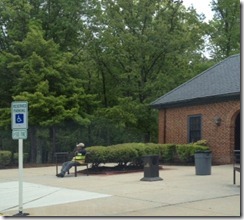By nearly 4 to 1, residents of the city and county of Durham, NC, where I live, rate appearance and physical upkeep a high community priority. The ratio of those who feel strongly that way is 6 to 1.
The challenge of meeting this expectation is compounded by the fact that the state’s sixth most populated county swells each day with commuters who hold three out of every five jobs here (a far greater net proportion than the vast majority of other communities) along with nearly 7 million visitors each year.
While after years of neglect, residents who live within the limits of the City of Durham perceive some incremental improvements, with 2.7 to 1 satisfied with the overall appearance of the city, with 8% very satisfied and 18% or nearly 1 in 5 dissatisfied or very dissatisfied and nearly a third uncertain.
While city residents ranked cleanliness and appearance of roadsides an area to increase emphasis, in an anonymous survey last year residents of the city and county combined disagreed by more than 3 to 1 with the statement that Durham roadsides are attractive and litter free. Those feeling very strongly disagreed by nearly 5 to 1.
There are also some other disturbing signs that tolerating neglect and failing to maintain best practice levels for appearance for so many years has been demotivating.
Durham is the 6th most populous county in North Carolina and nationally known for its volunteerism, but it ranked only ninth and very nearly fell to 11th or 12th in terms of volunteer hours devoted during the 2011 NC Big Sweep litter clean ups.
Even so, with fewer than its share of volunteers and volunteer hours compared to its share of state population, the Durham participants were able to clear away its proportion of litter at 5.5 tons compared to nearly 193 tons statewide.
While Durham is slightly less than 3% of the state’s population, enforcement agencies here issue only 1.8% of litter citations statewide and win an even lower proportion of convictions.
Though sixth in population, Durham ranks 9th out of the ten most populous counties in litter citations and convictions.
Nearby Wake County is 3.4 times Durham’s population, spread out over a geographic area nearly three times larger, but agencies issue nearly five times as many citations for litter there.
While Durham residents are as much as 15 times more passionate about their community than the benchmark for other communities, a pivotal predictor of attachment, by several measures there are indications Durham is falling well short of residents’ expectations for overall appearance.
As volunteers for Keep Durham Beautiful spread out through the community on July 12th to conduct the annual Durham roadside litter/appearance index, it is important that city and county officials take heed.
Volunteer clean up efforts are a means to supplement not substitute for a backbone of day-to-day maintenance expected of local governments here. Without that, volunteer enthusiasm wanes while it is likely that agencies have less incentive to approach enforcement with the same intensity even though the link between neglect, environmental disorder and crime is so strong.
The North Carolina Department of Transportation does an excellent job each year of documenting interagency and non-profit litter clean up and enforcement including roadside beautification.
It is an excellent template for consolidated reporting upon which cities and counties along with related non-profits would be well advised to expand so the picture is even more complete.
NCDOT manages 79,330 miles of roadside including county roads throughout the state, the second largest of any state. Even with reductions in resources, NCDOT employees picked up litter along 150,410 shoulder miles last year filling nearly 400,000 bags.
The State Adopt-A-Highway program leveraged 4,631 groups to adopt 9,100 road miles and deploying nearly 450,000 volunteer hours to clear 12,157 roadside miles of more than 1700 tons of litter and debris, recycling 327 tons.
Together with 33 others around the state, affiliates such as Keep Durham Beautiful rallied more than 72,000 volunteers in 258 communities to clear another 12,564 miles of roadway of 454 tons of litter and debris and another 5,497 acres of park and public land and 122 miles of shoreline.
All of this effort still falls well short of keeping state and local roadways clean enough to inhibit litterers. In the words of the late Charles Kuralt, “Two Americas meet there: the ugly one and the beautiful one. And of course, Americans of their own free will created them both.”
The blight of litter is caused by just 4% of the population who intentionally litter and another 17% who are oblivious such as the worker at a Virginia I 85 rest area shown in the photo in this blog who, while on break, sat casually smoking cigarette after cigarette during my recent stop, throwing the butts at his feet all within five feet of a canister for that purpose.
Is it only coincidence that the percentage of people who litter is similar to the percentage who still find roadside billboards useful, even if for just a few times a month.
Those who litter intentionally may feel empowered by the fact that some in the North Carolina General Assembly still advocate on behalf of the nearly 8,000 billboards along just its major highways alone, often referred to as “litter-on-a-stick” by many of the nearly 8 of 10 North Carolinians who consider them a desecration.
But the good news about litter is how far we have come, thanks to the efforts of the dedicated agencies, organizations and volunteers in the NCDOT report. Through their diligence and commitment we can be inspired by the words of Kuralt:
“I am persuaded of this with all my heart, ordinary Americans want a beautiful country. We are proud of the amber waves of grain and the purple mountains majesties.
And we are not powerless…”
No comments:
Post a Comment